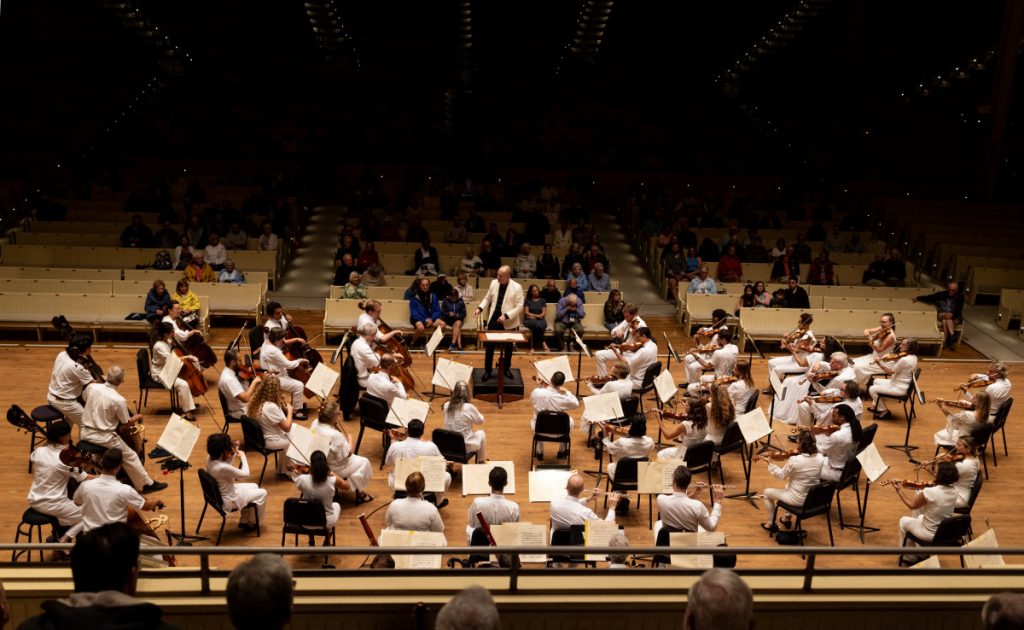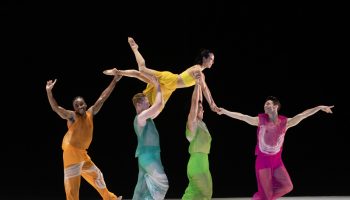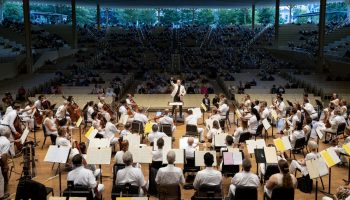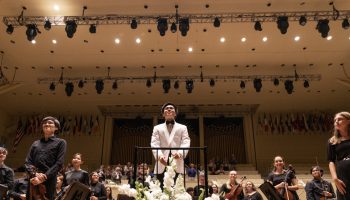
Andrew Druckenbrod
guest critic
For the monarchy, aristocracy and high culture of 18th-century France, the grandiose ruled. In Versailles and Paris, opulence projected puissance, and its musical tableau was no exception. Operas were extravagant and orchestras grand. Foreign composers looking to make headway in the country found themselves with more firepower than they enjoyed at home.
Composers Joseph Haydn and Wolfgang Mozart were among those, and a smart program last Thursday by the Chautauqua Symphony Orchestra and conductor Rossen Milanov showcased a “Parisian” symphony by each.
With the typical audience reduced due to a tempest rolling across the lake (while glorious lightning flashed throughout), the concert opened with a work by a man who was more famous in Paris than those two titans: Joseph Bologne, Chevalier de Saint-Georges.
If you were lucky enough to have attended the marvelous biographic play/concert production, The Chevalier, last year in the Amphitheater, you know about this 18th-century polymath. Master fencer, composer, violinist and advocate for racial equality, Bologne saw great prejudice because of his status as a “mulatto.”

But around the time of the 1780 premiere of his opera comique, L’Amant Anonyme (The Anonymous Lover), with a libretto by playwright Desfontaines-Lavallée, he was at the height of his fame. The CSO performed its overture, with the strings capturing its breezy nature with elan.
Not long after, Haydn made the most of his invitation to write several symphonies for a concert series, of which Symphony No. 82 is a pleasant affair. While not matching the substance of his latter, it often has the ambience of a string quartet, the genre he was seminal in creating. Over the years, music director Milanov and the CSO strings have developed a magnificent rapport.
At times, he had only to tip his shoulder to cue them or barely move his arms. The results were sharp details, legato phrases and even-handed rhythms. The winds and timpani blended well throughout, and the curious dance above a drone in the finale that lends the symphony its nickname of “The Bear” was mercifully not overdone, as can be the case.
For those who wonder why many consider Mozart the pinnacle of classical music, the concert presented an excellent example as it ended with his work for a large French orchestra: his Symphony No. 31, “Paris.” It displays dynamism in every part, mixing flourishes with driving rhythms and a glossy texture.
Milanov and the CSO brought out the nuances that define Mozart’s oeuvre, ushering the subtle shifts to minor mode, unexpected turns in developments and delayed gratification of a work he probably tossed off in a day despite rarely writing in the French style.
Andrew Druckenbrod is a former classical music critic of the Pittsburgh Post-Gazette. He studied musicology at the University of Minnesota and is an adjunct professor at the University of Pittsburgh.




